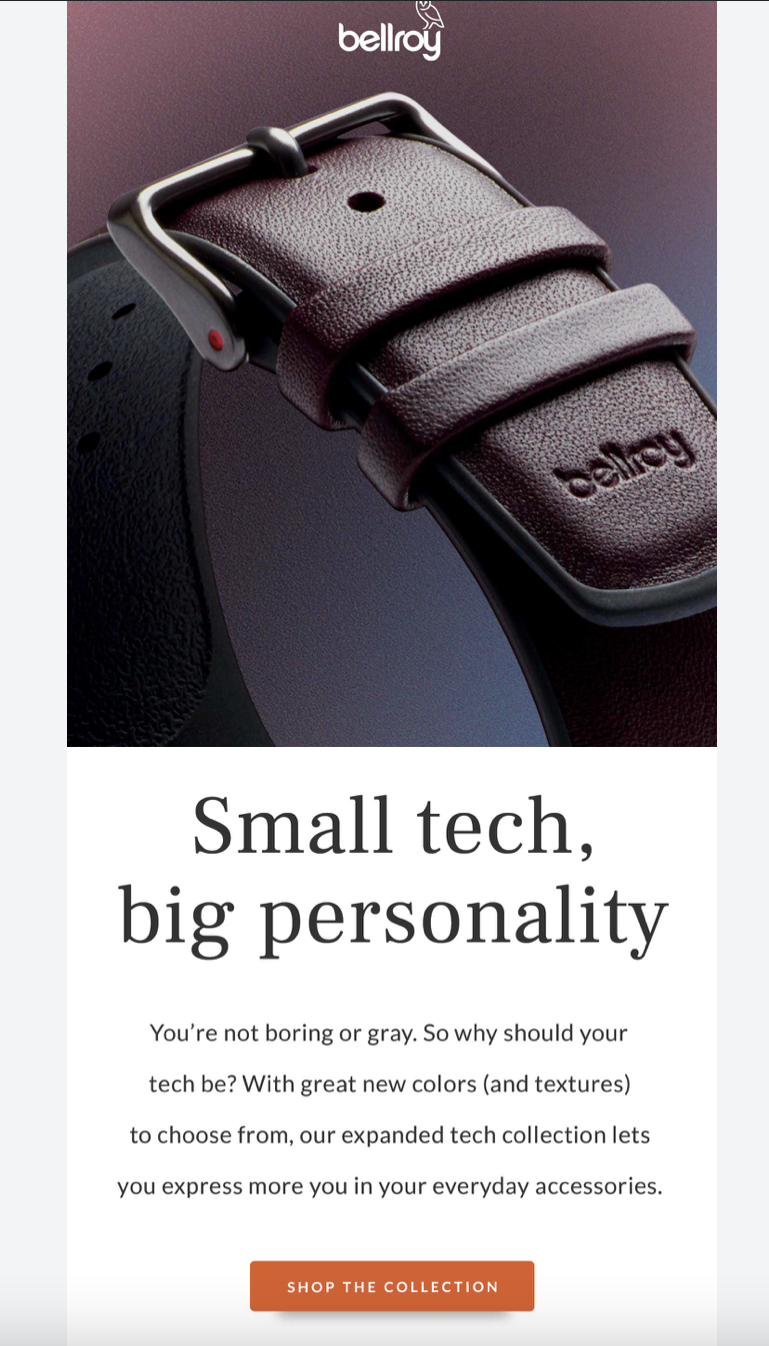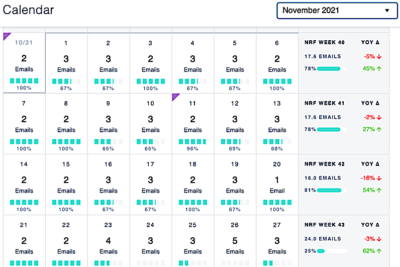Nail a product launch. Build lifelong fans.
You know your product is amazing, but you need to convince others too.
You spend a lot of resources developing products and stocking your ecommerce store, but how do you get people to buy from you? And, how do you build an audience of loyal fans by selling to the same people over and over again?
By perfectly matching your product with its target audience. And the way to do that is with solid product messaging.
What is product messaging?
Product messaging refers to the words, images, and stories you use to promote and communicate about your product to your target audience. It comprises everything including the copy on your website, product descriptions in your ecommerce store, posts and ads you share on social media, design of your marketing emails, and the SMS messages you send.
As such, your product messaging is part of your branding or brand positioning, though it’s not the same.
Brand positioning defines where you place your product in the market, which in turn influences how you’ll develop it, how you’ll market it, where you’ll sell it, and so on.
Product messaging involves communicating about your products in such a way that your brand positioning is reinforced. It’s the externalization of your brand positioning through narration on your own channels and the channels you advertise or appear on.
Since your product messaging should support your brand positioning, it’s important to be consistent with your messaging across the promotion of different products.
To achieve that, there are a few best practices you can follow.
Product messaging best practices
Whichever channels you decide to use for your product messaging—website, email, SMS, paid ads, etc.—following the practices below will help you get the best possible results.
1. Define your buyer personas
While some brands on social media still don’t seem to grasp this concept, there’s no point in shouting aimlessly. Your product messaging should always target a specific audience, and that audience should align with a well-defined buyer persona description created using a persona builder.
To define your buyer personas, answer the following questions about your product:
- For whom is your product a solution?
- Whose life can it improve?
- Whose values does it align with?
It’s crucial to conduct this exercise when developing or refining a product, but realize that you’ll need to refine your buyer persona(s) as you go by talking to your customers, doing market research, and studying engagement and buyer behavior. It’s not unusual for a brand to realize the product they launched became popular with a different crowd than they’d initially intended it for.
Nevertheless, you need to have someone in mind to be able to craft your initial product messaging. From there on, you can test, experiment, and improve on what you have.
Keep an eye on what your competitors are doing as well and check email and SMS marketing examples targeted to your target audience that we gather here at MailCharts for inspiration.
Finally, make sure to study the language your audience uses, and incorporate it in your messaging so it resonates with them even more.
2. Understand the core value of your product
The core value of your product is inherently linked to your buyer persona(s) or target audience. Clothing produced in a sustainable way is more valuable to someone who’s highly eco-conscious than to someone who wants to be able to keep up with fast-fashion trends.
In other words, the value of your product is only worth as much as its value in the eyes of your audience.
Once you’ve found the link between what your target audience values and how your product represents that, you can include that value in your product messaging using the same language that your target audience uses to talk about their problems and desires.
3. Highlight benefits and solutions
Usually, a product’s core value can be defined as a certain solution it offers or a set of benefits for the customers. And oftentimes, one product will have different benefits to different people within your target audience.
Say that you sell a healthy meal delivery subscription. To a career-focused woman, the main benefit of your product might be that it saves her time doing groceries and preparing meals while empowering her to maintain a healthy diet. To an overweight man who never properly learned to cook, however, it could be the solution to sticking to his daily calorie allowance and leading a healthier life.
This is another reason why it’s so important to get clear on your target audience. This information allows you to highlight different benefits, show potential customers that you understand their struggles, and demonstrate how your product offers a solution.
4. Have a competitive edge
Every product needs to offer something (even if that something is just to complete an outfit) and your product messaging should always communicate how your product is beneficial to its target customer. But that’s only the beginning.
In order to establish a truly effective product messaging strategy, you need a competitive edge—one or more key differentiators. What makes you stand out from other brands who are selling the same or similar products? Why should customers choose you over them?
To answer these questions, you need to know not only the market you’re operating in, but also—again—what your customers value.
The fast-fashion clothing brand and the eco-friendly clothing brand might both sell tank tops, but they cater to very different audiences for which they need to have different competitive edges.
A competitive advantage for the fast fashion brand might be that they guarantee next-day deliveries, while the competitive advantage of the eco-friendly clothing brand might be that a percentage of the revenue of every purchase goes to forest rehabilitation.
A key differentiator doesn’t need to be a single thing. It can be the level of customer service you offer that none of your competitors has, the post-purchase guidance on how to get the most out of your product, or how your brand takes a stand for or against something.
5. Test and update your messaging regularly
Once you’ve decided how you’ll position your product, which language and imagery you’ll use to communicate about it, and who you’ll promote it to, you can pour everything into product messaging guidelines for your marketing, sales, and customer success teams to use.
But the work doesn’t end there. As your brand develops and your audience grows, you’ll want to keep experimenting with your product messaging to make sure it’s as efficient and effective as possible. That includes running experiments and doing A/B tests on your existing campaigns.
To summarize, effective product messaging requires brands to:
- Know what your audience values
- Define how your product meets consumers’ needs
- Find a competitive edge
- Include all of the above in your product messaging
- Keep refining your messaging through A/B testing and experiments
6 great product messaging examples
To give you an idea of what great product messaging looks like, we’ve hand-selected some email and SMS product messaging examples from our MailCharts database. If you’re looking for even more inspiration, sign up for a free MailCharts account today and get access to thousands of email and SMS campaigns from other ecommerce brands.
As mentioned above, product messaging isn’t limited to SMS and email marketing, but these channels can be a valuable way to communicate this messaging. So, let’s dive in!
1. Billie breaks the mold

Razor brand Billie doesn’t shy away from breaking the mold. A few years ago, they sent out this email encouraging women to flaunt their mustaches and participate in “Movember.” While most beauty brands show women how to use their products to get rid of body hair, Billie let them know it’s perfectly fine to have some.
This stance gives them a competitive advantage with women who are tired of needing to be perfect, and it made the brand a part of the larger body positivity movement that’s been growing over the last few years.
2. Tesla uses cutting-edge safety to stand out

When it comes to electric cars, there’s Tesla and then there’s everyone else. The brand crafted a unique position for itself as a high-end builder, not just of all-electric vehicles, but also of clean energy generators and storage solutions. They have taken a clear stance against fossil fuels and became the car brand of the future.
However, its customers aren’t only eco-conscious drivers with big pockets. They are often also early adopters who want a Tesla for the status symbol it represents. The brand derives that status not just from being all-electric, but also from delivering a safe driving experience.
The messaging of the email above is geared entirely toward those leads for whom safety is a crucial factor when deciding on their next car. It lists the Model Y’s safety features and precedes them with a mention of how the car “earned a 5-star safety rating in every category from the National Highway Traffic Safety Administration”—adding credibility and trust.
3. Bellroy speaks to their audience

Bellroy makes slim, savvy, and sleek-looking wallets, bags, and accessories for tech lovers and those who are often on the go. These are the types of practical products that could easily appear dull, but Bellroy’s messaging is anything but that.
It knows its audience wants lightweight solutions to carry their stuff around, but it’s also stylish. The subject line of this email (“You’re not boring”) and its header (“Small tech, big personality”) play to that, as does the rest of the email’s copy.
4. Dermalogica focuses on benefits

This new product launch SMS sample by skincare brand Dermalogica focuses heavily on benefits to promote its new Biolumin-C Gel Moisturizer. It mentions that the moisturizer “instantly hydrates,” “brightens,” and will give the recipient “a radiance boost for healthy-looking skin.”
These are exactly the kind of things Dermatologica’s target audience is interested in.
5. Olipop sticks to its core value

Soda brand Olipop is all about offering healthier alternatives to traditionally sugar-rich drinks. This SMS introducing its new soda focuses on communicating that core value. The drink has “nothing to hide” and is “secret-free,” meaning there are no unhealthy ingredients to be worried about.
The soda emoji is a fun and on-brand way to brighten up the message.
6. Ciaté London builds trust with customer testimonials

Since your product messaging contributes to your branding, it’s never a bad idea to build trust and credibility with your audience. There are various ways to go about that:
- Share user-generated content, such as photos customers share on social media of them using your product
- Include positive testimonials
- Quote customer reviews
- Show high product ratings
- Present impressive statistics
In the email above, Ciaté London announces its MakeupMelter is back in stock and adds five-star reviews to make clear why that’s a big deal. The reviews are well chosen, mentioning several of the product’s benefits, like:
- “Removes everything with no tugging and pulling at the skin”
- “You only have to use a small amount to take off a whole face of makeup”
Product messaging template
To make sure you apply all product messaging best practices, you can use the following product messaging template each time you start preparing the launch of a new product. Later, as you start testing and experimenting with the messaging for this product, you can adapt the template so it always reflects what works best.
While this template is simple, it works great as an on-page overview to refer back to as you’re creating campaigns.
- Buyer personas
- Target audience language (words, style, imagery)
- Product core value and specific values per sub-audience
- Product benefits
- Key product features
- Audience pain points and the solution the product offers for them
- Competitive advantage of the product
Take the time to get your product messaging right
It may seem like a lot of work to define and keep refining your product messaging—and that’s because it is. But it’s also absolutely worth it. It’s the only way to create a brand that stands out and that draws in the type of customers that can become your loyal customers—people that support your brand and are looking for the core value your products have to offer.
Use the product messaging examples and tips in this post to refine your own messaging, and sign up for MailCharts to get instant access to the SMS and email campaigns of hundreds of ecommerce brands to learn how they promote their products.



